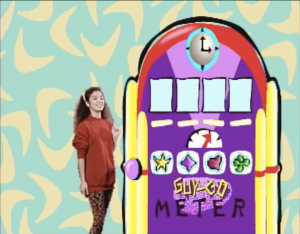7 Watch Out Mario! There’s a New Video Game Star in Town, and His Name is [YOUR FAVORITE ACTOR] Written and Directed by Quentin Tarantino
Emma Morgan-Mueller
Since the beginning of video games, people have often debated if they can be considered an art form.1 Whether or not every single game ever created counts as art is surely a difficult question to answer, however it’s undeniable that some games use cinematic techniques. From camerawork and motion capture to using Hollywood actors in games themselves, to treating games like interactive movies, games have increased in cinematic quality as technology has progressed.
Technological Aspects
Plenty of games include cutscenes in between gameplay segments. These scenes in themselves are usually movie-like. You can typically find these cutscenes unbroken in extremely long YouTube videos. The fact that there’s a demographic for these types of videos shows that people enjoy watching the movie adjacent parts of these games. At this point, it becomes a question of whether or not these separate cutscenes are a part of the game itself. Since the player has no input, it can be argued that these scenes aren’t a game. A few games over the years have tried to combat this conundrum. William Brooker’s article “Camera Eye, CG-Eye:Video Games and the Cinematic” describes this relationship between the player and the camera. He writes “Full-motion video cut-scenes break the player out of immersion in the diegesis, arguably like inter-tides in early films. Fixed camera angles restrict player movement and freedom, leading to an ‘on-rails’ experience like a theme-park ride, rather than a convincing simulation” (Brooker, 6). Some games such as Telltale’s The Walking Dead or any games created by David Cage (Heavy Rain, Beyond: Two Souls, Detroit Become Human) have made these scenes dependent on player interactivity. By adding in prompts for the player to choose, the “game” part is uninterrupted while still allowing the scene to play out.
God of War
A great example of a completely uninterrupted game comes from God of War (2018). While this game doesn’t utilize the interactivity of choosing what the main character says and does, the game appears to be one continuous shot including the gameplay sections. The director of the game, Cory Balrog, spoke about this technique and what he was hoping to achieve from using it in this capacity. He said “‘…You’re gonna get a sense of immediacy and connection to these characters, an unrelenting feel, to the adventure that you can’t get in any other way, and I can’t cite something else.’” (Kuchera) Included here is a short example of this transition from cutscene into gameplay. Content warning for blood and gore towards the end of the clip, but the first four minutes show the transitions. You can see how the camera shakes and follows the action and important objects in the scene just like how it would in a movie. The entire twenty hour long game is like this; transitioning back and forth between gameplay, cutscene, and back again. Even when the characters are in these fantastical positions, such as flying twenty feet in the air from a punch or meeting dragons, the camera makes the player feel involved in the story and close to how the protagonist is feeling throughout the events that transpire.
Silent Hill 2 and Beyond (get it because the game is called Beyond:Two Souls haha)
Connecting to how this was recorded, the voice actors for the characters blocked out and performed every scene in the game while wearing motion capture suits. This practice of using actors and actually performing the scenes in games has been a part of the form since the 90s2. An early example of this practice comes from the critically acclaimed horror game Silent Hill 2. In this game, the voice actors performed the scenes which were then translated into the game by hand. The creator of the CGI cutscenes, Sato Takayoshi, used his own face occasionally to draw individual expressions for the characters. From the Making of Silent Hill DVD included with the special edition of the game, he describes this process. “If I make them in front of a mirror, I can notice it. I can capture it.” (Fun TV) The amount of detail that went into this game is astounding and I really recommend looking into it more if this interests you. Since 2001, games have become capable of capturing these minute details Takoyoshi had to find by hand. Games such as Beyond: Two Souls from 2012 had greater advancements such as full-body scans of the actors available to use for the in-game character models. This video of the behind the scenes footage shows Elliot Page being scanned as well as the process he and the other actors went through during their performances. The director of the game, David Cage is seen describing this advancement to Page and another actor in the game: “We just capture the markers. The markers are very precise, including on the face. You don’t need to overact… You can be as subtle as you would in a film.” (IGN) It’s also very interesting to hear Page add notes to the script because of the interactivity of the game. Knowing that certain players would have different choices from this script is a difficult thing to juggle and it is very admirable to see him aware of these variations in the final product of the game. More recently Resident Evil 8 uses the same techniques of creating sets and placing the actors among the cardboard representations of set pieces. The most astounding part of this game is the sheer quality of the face captures. At 3:30 in this video, an example of the graphics for the characters is shown. People have praised this game in particular for how realistic the character Lady Dimetrescu is. She has realistic laugh lines, eye bags and wrinkles, as well as skin with pores that look like how skin looks in real life with powdery makeup on. Despite a few moments where her expressions are in the uncanny valley, people are really big fans of the character.All of these advancements in realistic video games have clearly had an effect on audience engagement. While stylized games such as Okami(right) or Animal Crossing New Horizons (left)


are beautiful and loved in their own ways, these games that use real people have shown to be extremely popular and sought after. A study was conducted featuring a critically acclaimed indie game called Shovel Knight in which people’s eyes were tracked between a live action short film version of the game compared to in-game footage. It was found that “the live action video has a [sic] 74% of a user’s highest attention in front of the digital video.”(Ahram, 4) While this can’t be used to judge every single consumer of video games, it’s still true that people have an easier time connecting with characters that more closely resemblethemselves in real life. It’s likely that as technology improves and can more accurately translate these actors’ faces and movements into games, they’ll be even closer visually to films.
Hollywood Involvement
Full-Motion Video Games are the earliest appearances of acting in video games. While these performances are often extremely cheesy due to the lack of graphical quality surrounding the actor’s performance, these actors were still there to do some acting. Pictured below is an example of a game called Girls Club, where the actor is placed directly in front of the video game’s environment.

More often than not, these games were formatted with a large menu on the bottom and side of the screen, creating a border for the film to take place in. A personal example of one of these games is Rama, pictured below.

It was one of the earliest games I ever played. It’s debatable whether this was appropriate for an easily scared five-year old, but that’s something I’ll break down with my therapist. In this form, the actors were in the foreground which gave the in-game backgrounds breathing room for its lower quality. In other instances of these games, the backgrounds would also be live action and the entire scene would be filmed in real life, similar to cutscenes in today’s games. These games, although being gimmicky and losing popularity over the years, featured cinematic techniques and qualities while still being technologically inferior to a typical movie from the same time period. The earliest example of Hollywood involvement in a game comes from an FMV game called Johnny Mnemonic, (pictured) which was also made into a movie starring Keanu Reeves at the same time.

Like God of War, this game is portrayed as an uninterrupted experience. This game has also received plenty of critique, but Seattle News Times writer Joseph Gelmis wrote “Of the two, the interactive CD-ROM version of author/screenwriter William Gibson’s 21st-century cyberpunk tale is the more culturally significant entertainment event.” (Gelmis) It’s honestly very jarring to read the technology and effort put into this 3 million dollar game and compare it to how poorly it performed. Retailing for almost $60 and requiring an incredibly beefy computer for the time, the game is lackluster. It has become easier to create FMV games as time has progressed, since almost everyone has access to high quality cameras in their pockets. Some recent examples are Late Shift and Simulacra, a personal favorite of mine. These games, however, lean more into the interactive movie rather than trying to balance challenging gameplay with real-life actors.
[YOUR FAVORITE ACTOR HERE]
Through FMV, celebrities and Hollywood actors have been a part of video games as themselves since the 90s. Plenty of musicians can be found in various Rock Band or Guitar Hero games as themselves or portrayed by look/sound alike actors. An example that has become a meme is Tim Curry in Command and Conquer: Red Alert 3 shown here. Despite the star power some of these games had, they haven’t become as prominent in the cultural memory as other games without any of these featured people. A technique that may change this idea is the fact that these famous people have transitioned from being a quirky appearance to actually being characters in games. In the past few years, actors have become larger parts of video game marketing and add to the hype of a game more than the game itself. The announcement trailer for the, now known to be underwhelming game Cyberpunk 2077, used Keanu Reeves’ reveal in the game to generate significantly more hype. Shown here is a very loud clip of Polygon writers reacting to the reveal. Along with many other promises for the diversity and technological aspects of the game, which ended up being extremely disappointing, Reeves’ involvement in the game created a larger audience who wouldn’t have been interested without his presence.
Besides reaching a new audience for fans of actors, these performances also add a higher quality to the games themselves. Mads Mikkelsen won an award for his performance in Death Stranding in 2019 when the other competitors were Norman Reedus and various video game voice actors3. Despite this achievement, I felt conflicted as an audience member. While Mikkelsen’s performance in the game is honestly my favorite part of the game, I felt that he and Reedus were encroaching on this space that for so long had been the same voice acting talent. On one hand, this could push the voice actors to do better, but on the other, most of these people don’t have the training and star power that live action actors like Mikkelsen and Reedus. While the two of them aren’t nearly as well known as a Tom Cruise type, they’re certainly more known to the average person than a name like Tara Strong or Laura Bailey. The Walking Dead tv series isn’t as niche as these faceless actors. If someone were to be sat down and told all of the credits that Tara Strong has, they may understand retrospectively the amount of talent and work she’s done on various childrens shows, such as Dil Pickles in Rugrats, Bubbles in The PowerPuff Girls, Timmy Turner in Fairly Odd Parents, Raven in Teen Titans and so on. My second question is if this inclusion is bad for the video game industry or will help games receive recognition from a wider audience. The Game Awards themselves are an awards show, but not nearly as important as The Oscars/Emmys/Grammys.
One side of this argument is that some of these games would be completely forgotten were it not for the celebrities included in them. If an unknown actor played Elliot Page’s or Willem Dafoe’s roles in Beyond: Two Souls and David Cage were a one-hit wonder and hadn’t made this brand for himself, would people talk about the other aspects of the game? If Hideo Kojima, creator of the Metal Gear Solid series hadn’t gotten all of his favorite actors (Mads Mikkelsen, Norman Reedus, Lea Seydoux, Margaret Qualley, Lindsay Wagner) and directors (Guillmo Del Toro, Nicolas Winding Refn) to star in the game as well as other celebrities as cameos (Conan O’Brien, Junji Ito, Edgar Wright) together, would anyone have anticipated its release? The game itself is difficult to play and is over 40 hours long, while the cutscenes by themselves are around 11 hours long and ultimately seem like three different stories rolled into one; a hard science fiction that asks the question of life’s meaning, a war story about the connections between a family torn apart, and a postal worker’s work day. These disparate parts are only enjoyable if the player really leans into the story. My favorite part of the game is about one hour before the ending and fifteen minutes before the end of this video, in which Mikkelsen gives a heart wrenching performance which is also a large spoiler for the story, so be warned if you’re at all interested in experiencing it for yourself. If people were put off by the monotony of the postal service simulator, they wouldn’t be able to see a lot of the good parts the game has to offer. It’s difficult to even tackle this scenario because of how self-selecting the process is. While I’m not a die-hard fanof any of the featured talent, it’s a latent thought that so many talented people were involved in the game, so there has to be something to it. In another dimension where zero star-power was involved in the project and the quality was somehow the same, those people would be able to answer the question. If Mikkelsen’s alternate had their career take off and be rewarded for their performance, then it would be clear that games can involve this level of cinematic quality and still be entertaining. Regardless, celebrities will continue to be involved in games as time goes on. Giancarlos Espocito, for one, has a leading role in the upcoming game and no doubt more actors will see the potential that video games have as forms of cinematic entertainment.
Closing Thoughts
Both the camera and actors involved in video games provide a higher quality to games themselves. With studio involvement as well as game directors that use the game medium to make movies, video games could become more highly regarded as an art form. Whether these advancements are a good thing for the video game industry or if these inclusions can even be considered as parts of the video games themselves is yet to be seen, however it’s clear that these aspects have created more artistic and unique takes on games and pushed the boundaries of the technological side of games.
Works Cited/Footnotes
1 https://en.wikipedia.org/wiki/Video_games_as_an_art_form
2 https://en.wikipedia.org/wiki/1990s_in_video_games
3 https://en.wikipedia.org/wiki/The_Game_Awards_2019#Video_games
Ahram, Tareq, and Falcão, Christianne. Advances in Usability, User Experience, Wearable and Assistive Technology. Springer International Publishing AG, 2020.
https://duwamish.lib.washington.edu/uwnetid/illiad.dll?Action=10&Form=75&Value=1990391
Brooker, Will. “Camera-Eye, CG-Eye: Videogames and the ‘Cinematic.’” Cinema Journal, vol. 48, no. 3, Spring 2009, pp. 122–128. EBSCOhost, doi:10.1353/cj.0.0126.
Caelkid. ❤️, 10 June 2019, caelkid.tumblr.com/post/185479572869/keanu.
Fun TV. Making of Silent Hill 2. YouTube, YouTube, 16 Aug. 2011, www.youtube.com/watch?v=E1VKvED76WQ&ab_channel=Fungo.
Gelmis, Joseph. “Johnny Mnemonic Is True Interactive CD-Rom Movie.” The Seattle Times, 4 June 1995.
GeoffTheHero. YouTube, YouTube, 9 June 2015, www.youtube.com/watch?v=g1Sq1Nr58hM&ab_channel=GeoffTheHero.
GLPLayground, director. YouTube, YouTube, 11 Nov. 2019, www.youtube.com/watch?v=ffu3p1W4oD4&ab_channel=Gamer%27sLittlePlayground.
IGNentertainment. YouTube, YouTube, 12 July 2012, www.youtube.com/watch?v=71m1hnIImNo&ab_channel=IGN.
Kuchera, Ben. “God of War’s Camera Was a Huge Risk That Paid Off.” Polygon, Polygon, 23 Apr. 2018, www.polygon.com/2018/4/23/17263016/god-of-war-playstation-4-camera-single-shot.
MKIceVsFire, director. YouTube, YouTube, 20 Nov. 2020, www.youtube.com/watch?v=1rJBP0jz95M&ab_channel=GameClips.
Written by Emma Morgan-Mueller (morgaemm)

